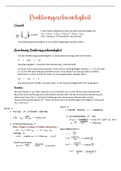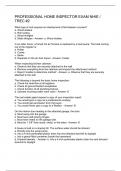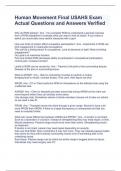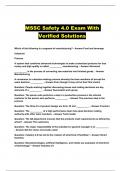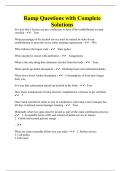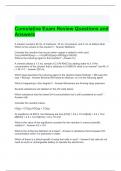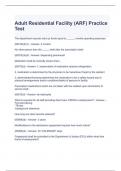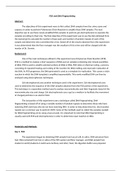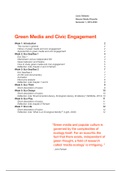Exam (elaborations)
Grade 9 Chemistry All Answers Graded A
- Institution
- Grade 9 Chemistry All Answers Graded A
Grade 9 Chemistry All Answers Graded A States of Matter Matter can exist in three main forms: solid, liquid, and gas. In a solid, particles are closely packed and don't flow like liquids. Solids retain their shape and occupy a fixed volume. Liquids, on the other hand, have particles that ar...
[Show more]




